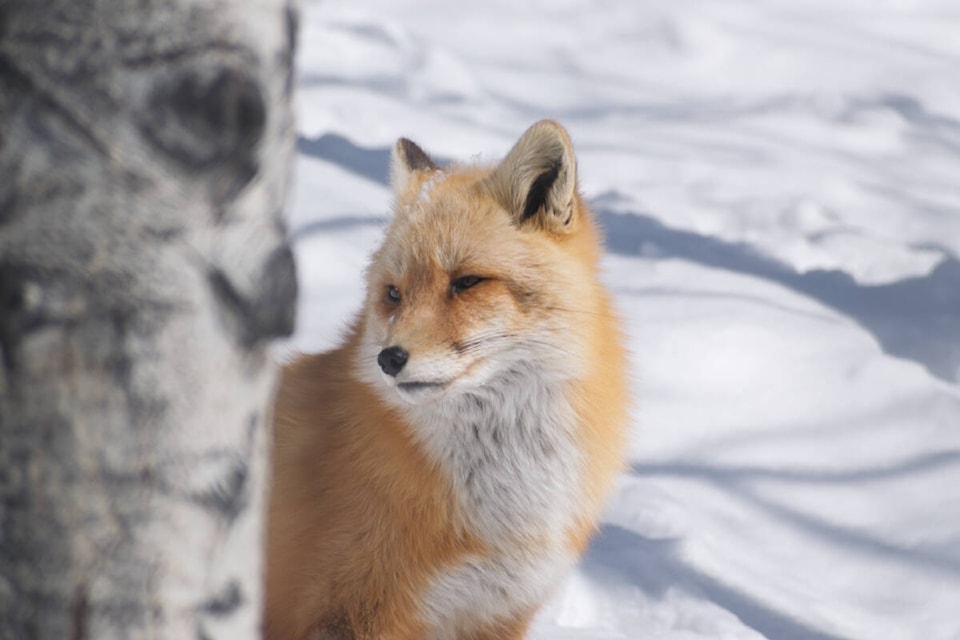On the 12 days of Christmas, some of the Yukon’s species are being tracked while others haven’t been spotted in decades.
When it comes to counting some carnivorous animals, estimated populations of cougar, coyote, lynx, red fox, ringed seal, northern river otter and wolverine in the Yukon are not determined. In some other cases, a number is given but the actual amount in the territory remains unknown.
Although there is no estimate on the Yukon government’s website for the number of Arctic foxes in the territory, 40 years of den occupancy surveys indicate no major decline in Arctic fox populations, which leads the Yukon government’s Environment department to believe their population remains healthy.
The same can’t be said for all species.
According to the Yukon’s 2023 state of the environment report released in late November, the territory is home to 8,184 wild species in total. That includes 8,022 native species, 153 introduced species and nine species with unknown origins. Vascular plants make up the largest group at 1,185 wild species, closely followed by beetles and flies.
The state of the environment report cautions that one-third of species are considered secure or apparently secure while 13.5 per cent of Yukon species are potentially at risk of disappearing from the territory.
Close to half of the species in the Yukon are data deficient, meaning that these species have been recorded but there’s a lack of information to provide a conservation rank, per the state of the environment report.
Another 6.5 per cent are unranked, meaning no effort has been put into assessing their status.
Ninety-six Yukon species haven’t been spotted in more than 40 years despite efforts to rediscover them. Most are mosses or lichens and vascular plants.
Some population estimates, viewing opportunities and fast facts are available on the Yukon government’s website for carnivores and other species known to live and roam in the territory.
The number of elusive grey wolves ranges from 4,000 to 5,000. They are distributed throughout the territory with the exception of a small southwestern-most pocket of the Yukon. Grey wolves resemble a domestic dog like a husky but with a larger head and a longer, taller body with a narrower chest and bigger feet. It’s easier to hear a wolf than to spot one because their howls can carry long distances. Their only predators are humans, according to the website.
About 10,000 American black bears are believed to be found in the territory.
Another 6,000 to 7,000 grizzly bears are estimated to habituate here, but the actual number remains unknown.
Approximately 1,500 polar bears dwell in all the Southern Beaufort Sea including Alaska and the Northwest Territories, but there’s no number specific to the Yukon.
Wolverines are considered one of the most reclusive animals of the boreal forest, per the Yukon government website. These solitary creatures, which are distributed throughout the territory, occupy home ranges spanning hundreds of square kilometres. They are opportunistic eaters, mostly known as scavengers, and will eat almost anything.
Zachary Fogel, a University of Alberta Master’s student in conservation biology, is looking into the impact of industrial disturbance such as mining on wolverines, according to an online summary of Fogel’s work on the Yukon University website. Per the summary, wolverines are a species of concern in Canada, culturally significant to the Tr’ondëk Hwëch’in and a strong indicator of an ecosystem’s overall health. Fogel is based at Yukon University in collaboration with the University of Alberta and advised by YukonU and UofA professor, Dr. Fiona Schmiegelow.
Fogel has been setting up wildlife cameras and autonomous recording units to help determine wolverine population densities at each study site and monitor the level of noise from machinery and vehicles. The data and satellite imagery will be used to assess differences in wolverine density at different levels of disturbance.
The News attempted to reach Fogel for an update on his work but didn’t get a response by publication.
The state of the environment report notes biodiversity, which refers to the number of different plants and animals regularly found in an area, has been added as a new indicator.
Per the report, the amount of protected land indicates the Yukon government’s dedication to biodiversity. Climate change and invasive species threaten biodiversity.
Preventing species from becoming extinct requires early intervention, the report states. It notes that in 1996, wildlife ministers signed an accord to “monitor, assess and report regularly on the status of all wild species.”
Contact Dana Hatherly at dana.hatherly@yukon-news.com
